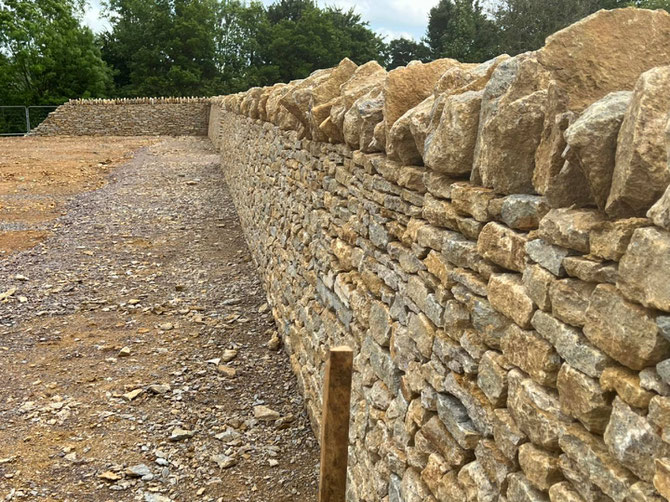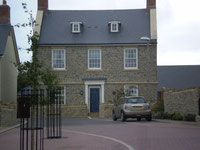

Most of our lives are consumed with attaining temporary pleasures, consumables that are with us for often just minutes, months, or at best a few years. For example the visit to the restaurant, the purchase of some clothes, some plants, the food, the car etc. This trend has accelerated over the past few decades as repairing, making do, and with-holding have disappeared as we have become time hungry, and preoccupied by instant solutions, and entertainment.
However as we realise our mortality, and the fact that our ecosystems strains under the burden of our demands, communities and people are looking towards the longer view.
Gardeners are waking up to the need to work with nature, finding longer term solutions, understanding that instant consumerism pleasures are not the best.
Traditions that went out of fashion in the 1940's, are beginning to reverse. One of these is the art of drystone walling, and garden walling with natural stone. It had originally almost disappeared for several reasons. With the war, the housing stock had literally being reduced along with the wealth and a shortage of labour. This led to using prefabricated materials of corrugated iron, chip board, concrete, steel - anything to save time, effort and money. As a country we lost our small artisan quarries, our wild flower meadows, our crafts, or artisan foods such as cheeses. By 1990, this trend had got so bad that the last embers were going out. However, having reached a low point, people began to take action. The Rare Breeds Survival Trust was started, new cheeses were produced, old quarries reopened, people began building with traditional materials that added substance to their 'grand designs'.
Stalbridge Quarries
Stalbridge Quarries followed this pattern. Quarrying on the estate had been in existence for at least 500 years, quarrying the readily available Forest Marble stone for houses, barns, stone walls wherever the resource was close to the surface. However the last quarry closed with the war. Comte Guy de Pelet initiated a reopening of one of the old quarries in about 1990. The land agents and quarrying consultants only knew about aggregate quarries that fed the industrial construction businesses, and so they did not understand the nuances of small scale artisan quarrying that produced walling stone, building stone and garden walling. However having stumbled through planning, we started in 1998 relearning the art of cutting Forest Marble stone.
The stone itself is a living art form, even before it is cut and shaped. It is formed in the Jurassic period, and is composed of compressed shells and the occasional piece of rotten wood (this is why it is called 'Forest' Marble) that leaves curious holes in the stone. Yes the wood is just rotten, and not fossilised. The stone itself is extremely hard and this is why it is called Forest 'Marble', and at the same time comes in flat layers of 2 inches to 5 inches thick. This makes it ideal for building. The hardness, the flatness of the beds, and finally the rich brown, buff and grey blue give it a highly desirable mottled look. The stone was so good that it had been quarried (before they all closed) from Northamptonshire through the Cotswolds, and down to Wiltshire, Somerset, and Dorset.
Today, architects, landscape gardeners, and stone masons use the different grades of the stone for walling stone in their houses, cottages, garden, and landscaping. The exemplary nature of the stone, as well as the way it is cut and dressed by our masons, enables the dry stone wallers, and stone masons to build a very tight jointed, stable stone walls fast with the hard flat stone walling produced by the Quarry. This is especially the case with the dry stone walling that is used to build the extraordinary dry stone walls that we see appearing in the countryside today. For smaller projects, the garden walling is used.
These stone walls, natural stone buildings, and structures are built with hand crafted stone, rooting the structures to the earth and providing beauty for generations to come.
 Stalbridge Quarries
Stalbridge Quarries







Write a comment